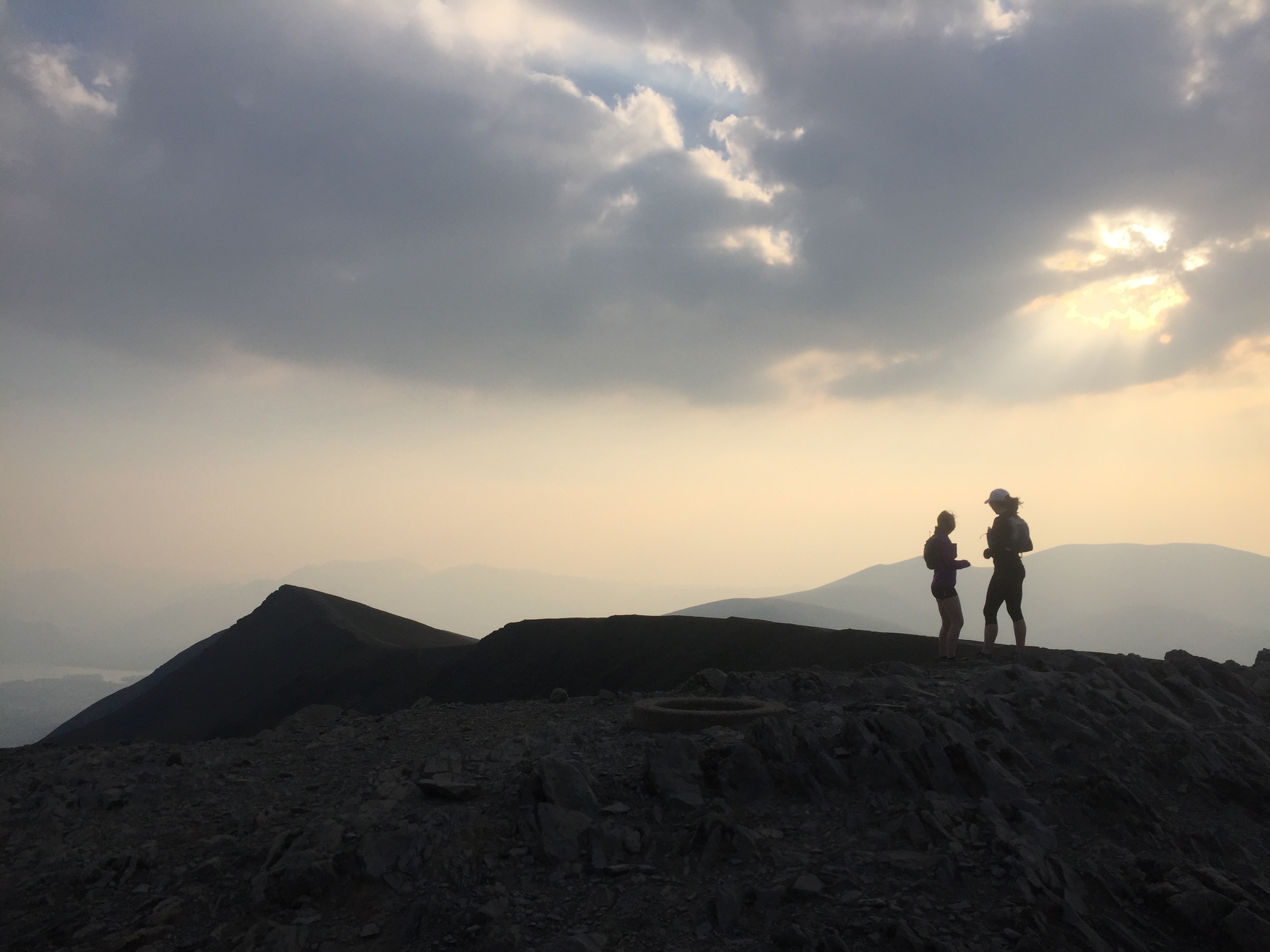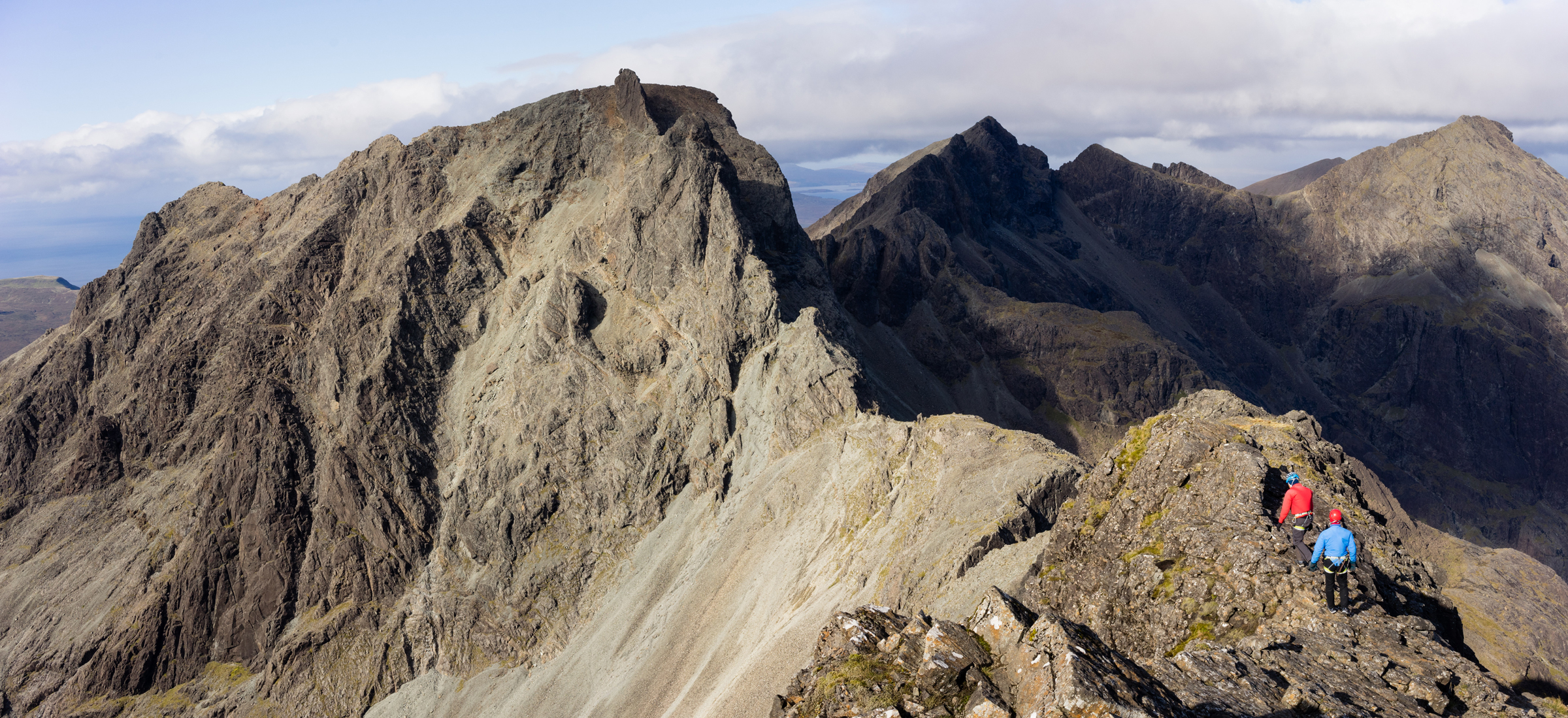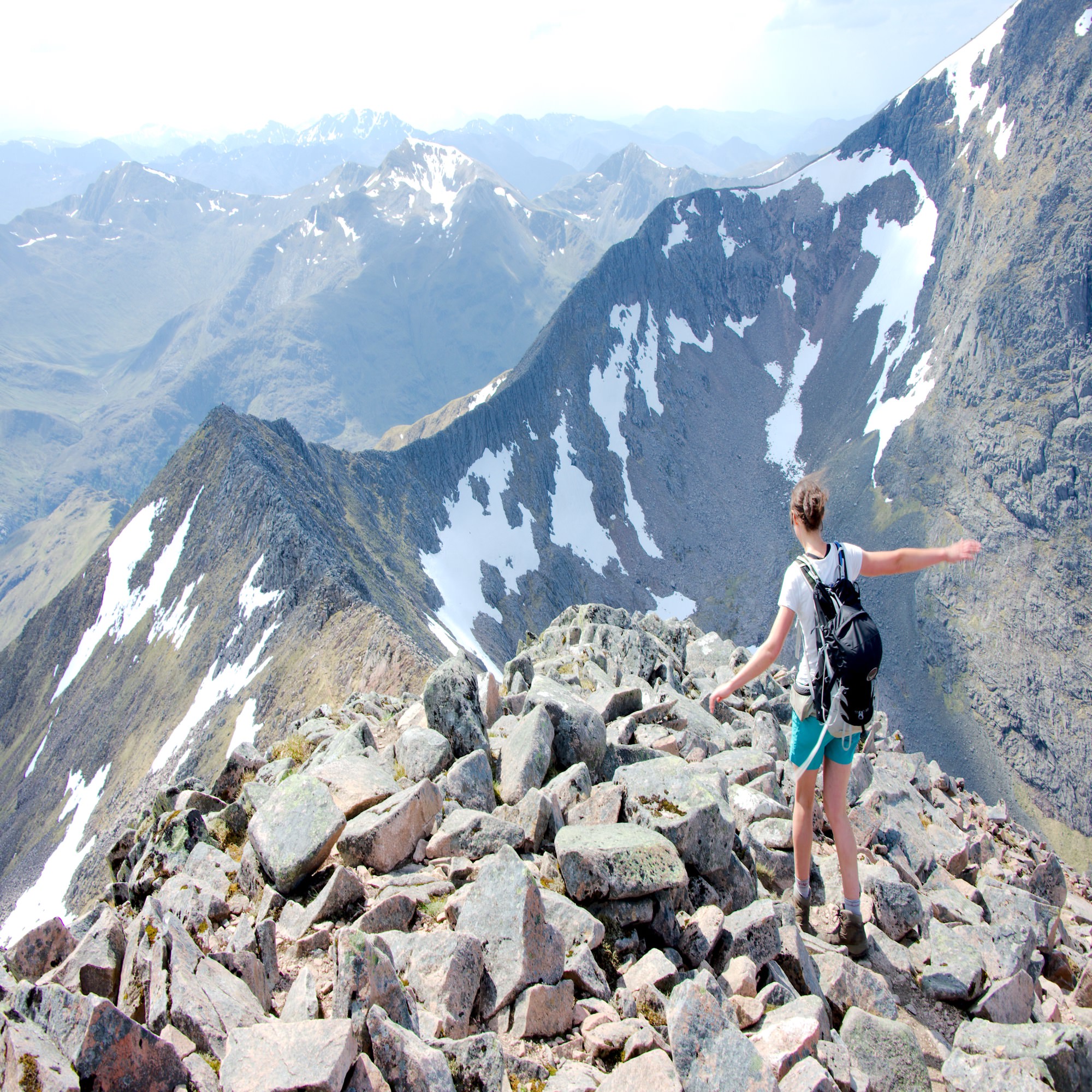Scrambling in Snowdonia: the Clogwyn y Person Arête
Britain’s mountains bristle with hands-on-rock routes, and nowhere more densely than North Wales. Dan Aspel shares his first experience of a roped grade three scramble on the flanks of the Snowdon massif.
I’m going to try and list every way to indulge an enthusiasm for the outdoors. Ready? OK, here goes: mountain bike riding, kayaking, caving, canyoneering, paragliding, BASE jumping, wingsuit flying, horse riding, quad biking, wild swimming, rambling, wild camping, bushcraft practising, bivvying, bothying, hillwalking, fell running, orienteering, mountain marathon-ing, hill bagging, mountaineering, rock climbing, ice climbing, trad climbing, sport climbing, via ferrata-ing… and that’s all I’ve got for now. I’m sure there are plenty more. Feel free to comment below with your favourite. But as with so many things, perhaps the finest results come from blending one or more disciplines together. And that’s how we get to scrambling.
In its purest form scrambling is such a natural pursuit that it’s impossible not to love it. Take a child to the hills and they’ll start doing it instinctively. To be fair, they’ll do it if you leave them alone in a living room or supermarket for more than 30 seconds.
It just means using your hands and feet to clamber up, over and along obstacles while you walk from A to B. And this purity of appeal means that whether you’re only just starting to discover our hills, gorges and peaks or you’re a competent winter climber and seasoned alpinist, you’re likely to find joy in it.
But let’s follow this rabbit hole a little deeper, because I’m going to introduce one more blend into the mix. In the UK scrambles come ranked into three categories: Grades one, two and three. Grades one and two are direct, increasingly challenging and entirely non-technical. Think of Helvellyn’s Striding Edge, Tryfan’s North Ridge or Glen Coe’s Aonach Eagach. Grade three, however, is a grey area. A thrilling one. You may need to use a rope. You may need to fit suitable ‘protection’ into the rock. Whether you do so is entirely up to your own level of competence and experience. It’s a linking bridge between the disparate worlds of the adventurous walker and the crag-fixated climber. It’s also a natural progression for anyone thoroughly jazzed by scintillating grade two routes and looking to push their boundaries further and revel in every ridge, gully and aspect of their favourite big mountains. I’m a fairly recent convert, and I’d like to tell you about my first experience of this superb pastime.
The Clogwyn y Person Arête rises up out of Cwms Uchaf and Glas, 500m above the Pass of Llanberis. At its tip it meets the summit ridge of Crib y Ddysgl, itself the northern shoulder of the mighty Snowdon horseshoe and affording magnificent views of all that soaring splendour. At its bottom it melds into a wild world of scattered llyns and rough, spongy ground that looks out to the southern face of the high Glyderau. Along its 350m(ish) length it is varied, exposed, precarious, delightful, terrifying and indescribably compelling. This is routinely described as one of the strongest natural lines of ascent in Snowdonia. Nothing about it feels diluted by artificially manufactured thrills. You climb this way to the summit or you do not.
Starting in the Pass, it was immediately clear that this is a route for mountain-folk. No roadside fiddling on the Cromlech boulders here (you can, and we did, park directly next to these iconic climbing blocks), instead there was a good hour plus of hefting ourselves and swollen packs up the steep hillside to the start of our route. Scrambling partner Maciej (pronounced mah-check if you ever meet him, although he’s perfectly happy with ‘Matt’) and I loaded ourselves up and got to it.
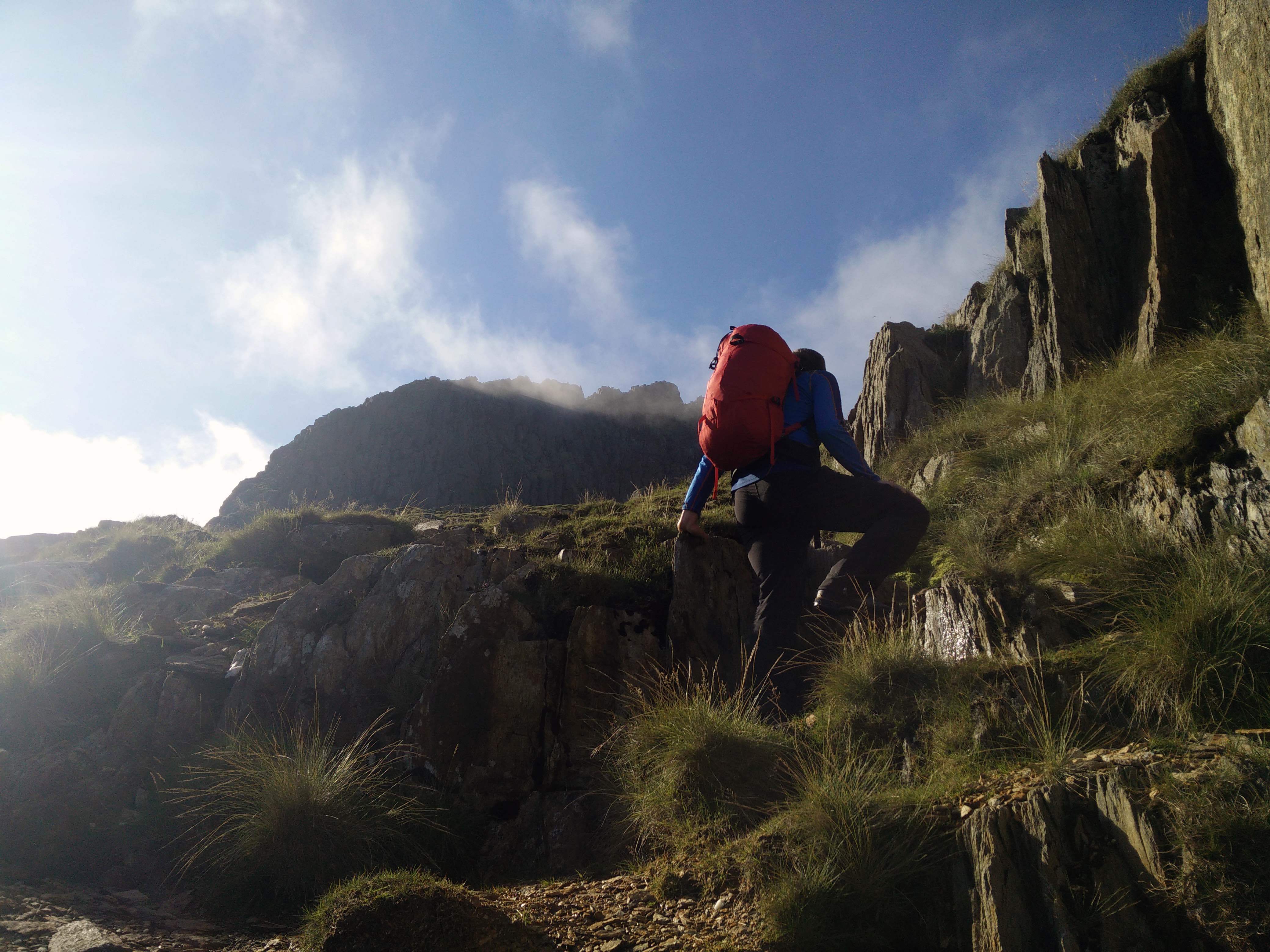
This is another factor that’s worth mentioning about grade three scrambles: the kit. As mentioned, if you’re a confident climber approaching these routes from above (metaphorically speaking) then it’s possible – though not entirely recommended – that you could tackle them competently without any protection or gear whatsoever. If you’re a walker approaching them from below (again, metaphorically) then you’ll undoubtedly need a rope, a harness, a rack of slings, nuts and hexes and the knowledge of how to safely use them. In this case all of these came from Maciej. It is incredibly rare, if not unknown, that anybody attempts routes such as this without learning the required techniques from either a more experienced friend or a suitably qualified outdoor instructor. I was not going to risk my neck needlessly and so opted for the former.
What are slings, nuts and hexes, you ask? The answer is simple. They are the devices that will catch you should you decide to fall off the mountainside. Slings are loops of relatively robust material (traditionally nylon, now mostly polyethylene) that you can throw around an immovable rocky prominence on your journey upward. Nuts and hexes are metal stoppers of varying sizes typically made of aluminium which you can slot and secure into cracks in the rock. Whichever of these you use, you will then secure your rope to them with a karabiner. The rope is tied to your harness. Your partner keeps a hold on the rope beneath you, ready to lock it tight with their belay device (a simple metal holder and braking mechanism through which the rope passes) should you – as mentioned previously – decide to launch yourself downwards at a swift pace. Once you are nearing the end of your rope length you will secure yourself to the mountain (typically with a sling) and generously yank your partner up after you while they remove and collect the protection you have left behind. To do this they may need to employ a long, hooked device known as a nut key (of which DMM make a fabulous example titled the ‘nutbuster’, incidentally) to wiggle and jiggle the more stubbornly emplaced units from their crevices. As you may be able to guess, the lead climber has the tougher and more demanding job of it, hence why most partnerships take it in turns from each pitch of rope to the next. All of which means that you will make much slower progress than when not using a rope, and will typically be carrying a great deal (roughly five kilograms at least) more weight than when applying yourself to a route au naturelle.
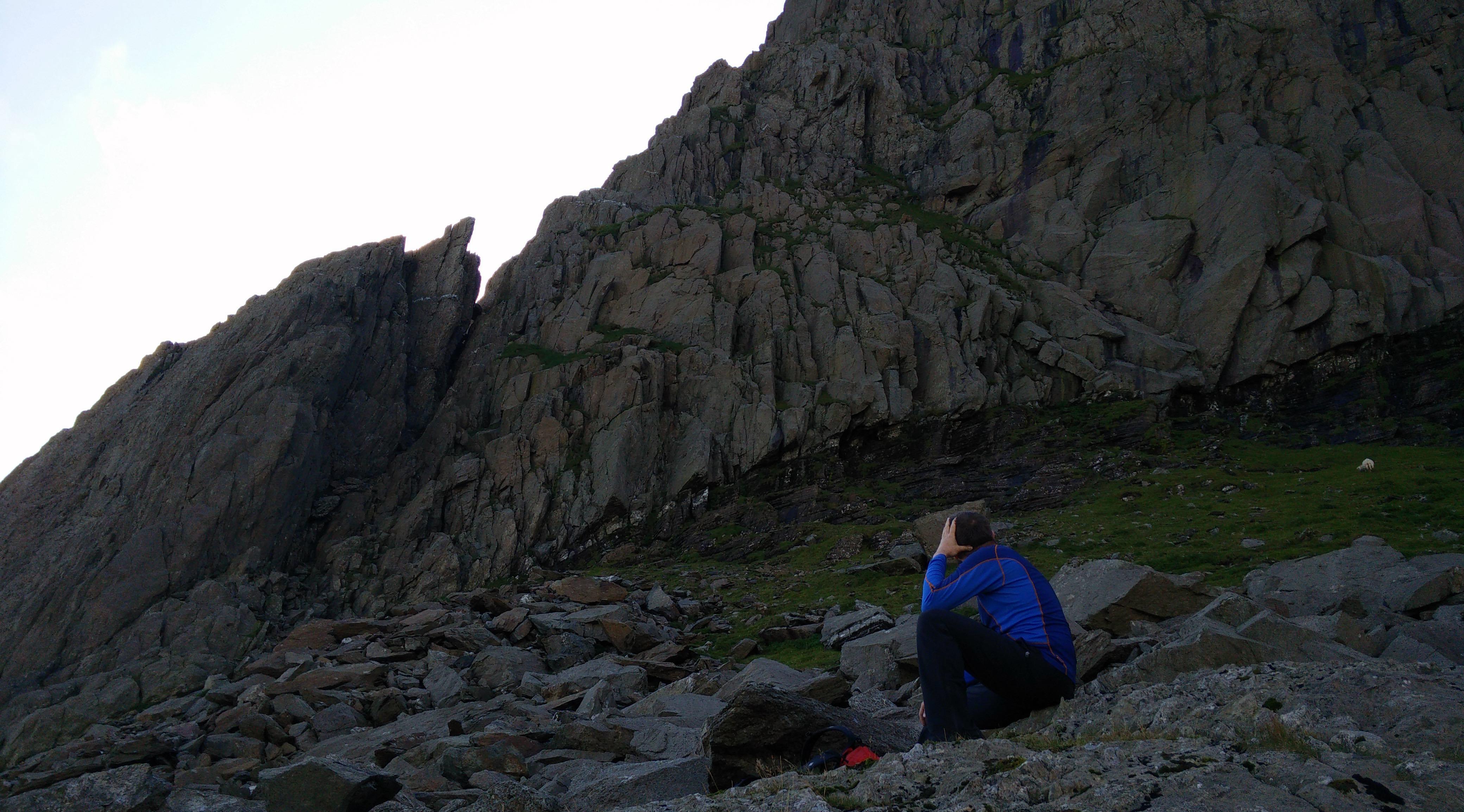
Consequently it was with no small beading of sweat and puffing of breath that Maciej and I finally made it into Cwm Glas, welcome for the dark, pooling shadow in which we found ourselves gulping water and swallowing a few provisions. The shadow was that of our arête. We sat in the soft, early-morning breeze looking up at its jagged back and (in my case, at least) thought what a fearsome bit of mountain it looked like from this angle.
Having geared up, we worked our way to the route’s start, our gear clinking and jangling at our sides in serendipitous imitation of meditation bells. The atmosphere felt obligingly Himalayan to match.
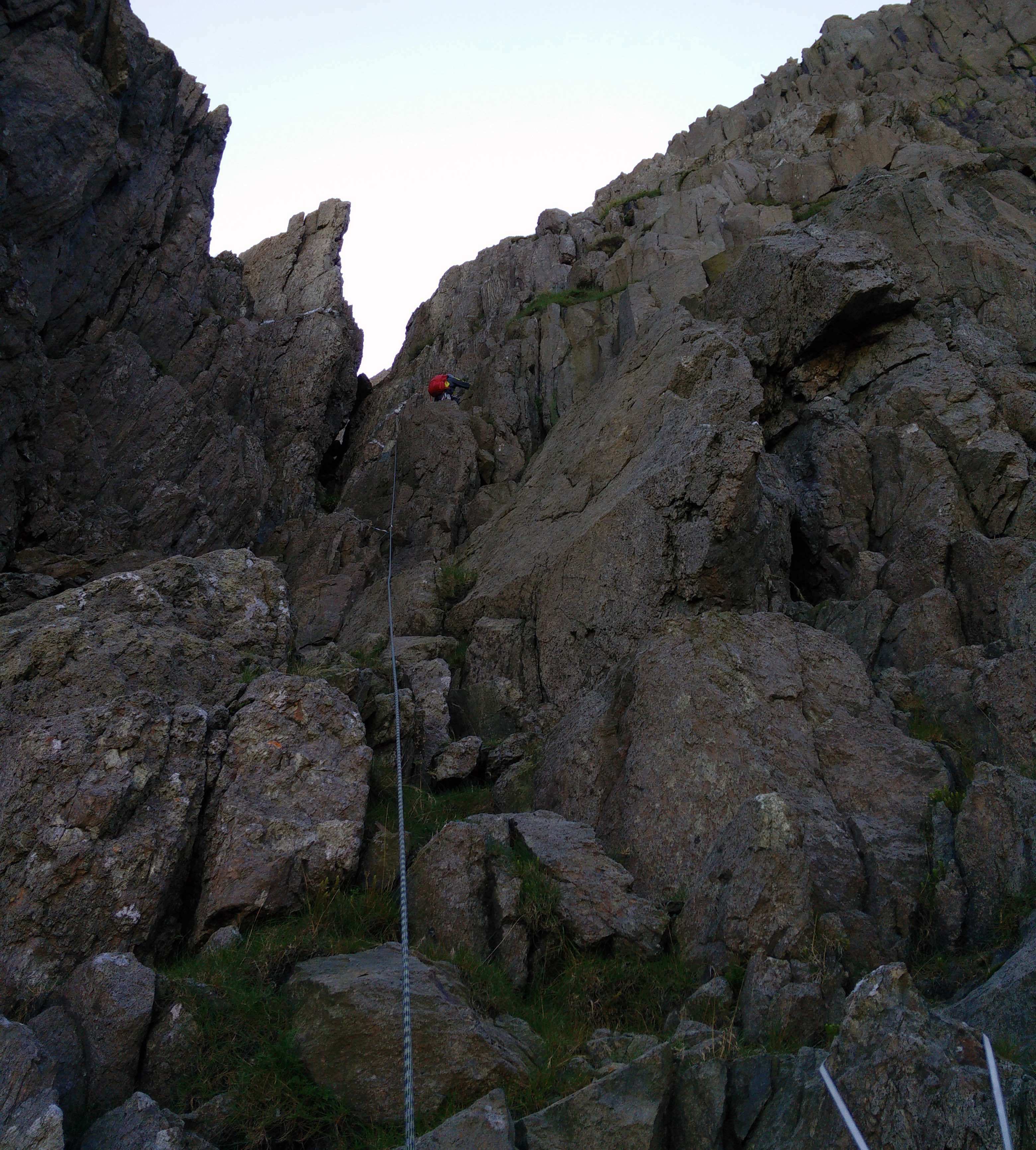
Leading the first pitch, Maciej set off upwards while I waited below – securely looped to the mountainside. Seconding was an easy introduction. After he had placed an ascending ladder of five pieces of protection and reached a natural resting point near enough to the end of our 50m rope it was my turn to follow. The feeling of confidence was palpable. With a rope tied to my harness and pulled consistently taut from above the safety net was extensive. I moved quickly and happily up the steep steps of jagged rock – lifting myself without thought into positions that, had I been ropeless, would have left me immobile with anxiety. We repeated this for a further pitch, with the 10-minute pause while Maciej climbed his section giving me plenty of time to breathe deeply and drink in the views of air and rock and sun and sky playing out in every direction all around me.
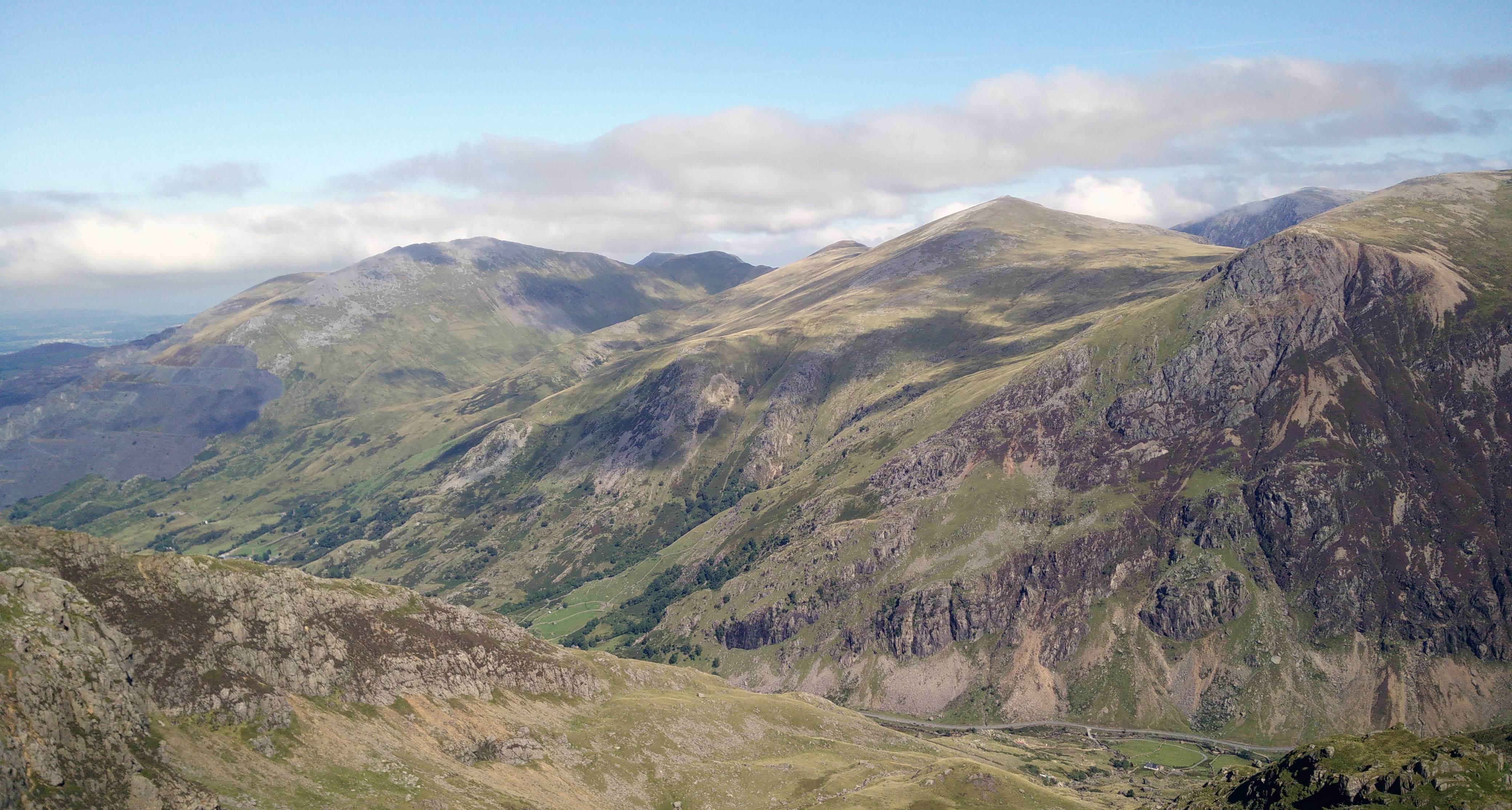
And then came my turn. Boosted by the experience of being effectively pulled up the mountain, I began without hesitation. That was quickly righted.
The first moves, it turned out, were the hardest.
Not because they were more technical than the others, but purely because it was in those moments that I was climbing up with no protection fitted. If I were I to fall, it would not be until I had passed Maciej that the rope would catch me. It would be the worst possible place to make an error, and there was no avoiding that. I cautiously edged my way upwards, nervous of breaking my four points of contact with the rock and making slow progress as a result. After what seemed like many minutes I reached a spike of rock that looked solid enough to take a sling. I looked down. I was barely a few metres above Maciej’s head. I looped a sling around it, clipped the rope in and began to breathe more easily. Soon I had reached a handful of slender fissures in the rock. They looked smooth and polished, as though many people had already done what I intended to.
“Should I place a nut in here?” I called down to Maciej.
“Why not? You carried them up there,” came the reply.
Soon a meaty joint of anodised aluminium was happily jammed in place, a downward yank confirming that it was going nowhere in the event of a sudden application of pressure.
By the time I had repeated the act with various hexes, slings and that first nut’s brightly coloured brothers, I was becoming awed and thrilled by the process.
These pieces of metal and the stretch of nylon rope winding between them weren’t just providing a zen-like experience as I repeated the routines of fitting and securing them, they were freeing me from fear and allowing me to be calm in a place of spectacular beauty without the drag of anxiety I would have felt had I been unprotected.
Once I was lodged in a comfortable nook, Maciej followed after me, removing the pieces I had placed and passing up nods and grunts of approval as each one proved solid and less-than-effortless to remove. He reached me and we looked up at the glorious verticality we had left to climb. I led the next pitch, and the next, and the next through a feast of ridgeline and exposure and wall and vista. By the time we had reached the easing of the scree-covered spur which marks the arête’s finish I could feel a glow of sky blue-tinged joy in my gut.
The dramatic drop of land at our backs felt like a great challenge to have overcome, the views to our left along Crib Goch and onto Moel Siabod were draped in the warm tones of the afternoon sun. All in all, it felt like a formative moment in a perfect setting.
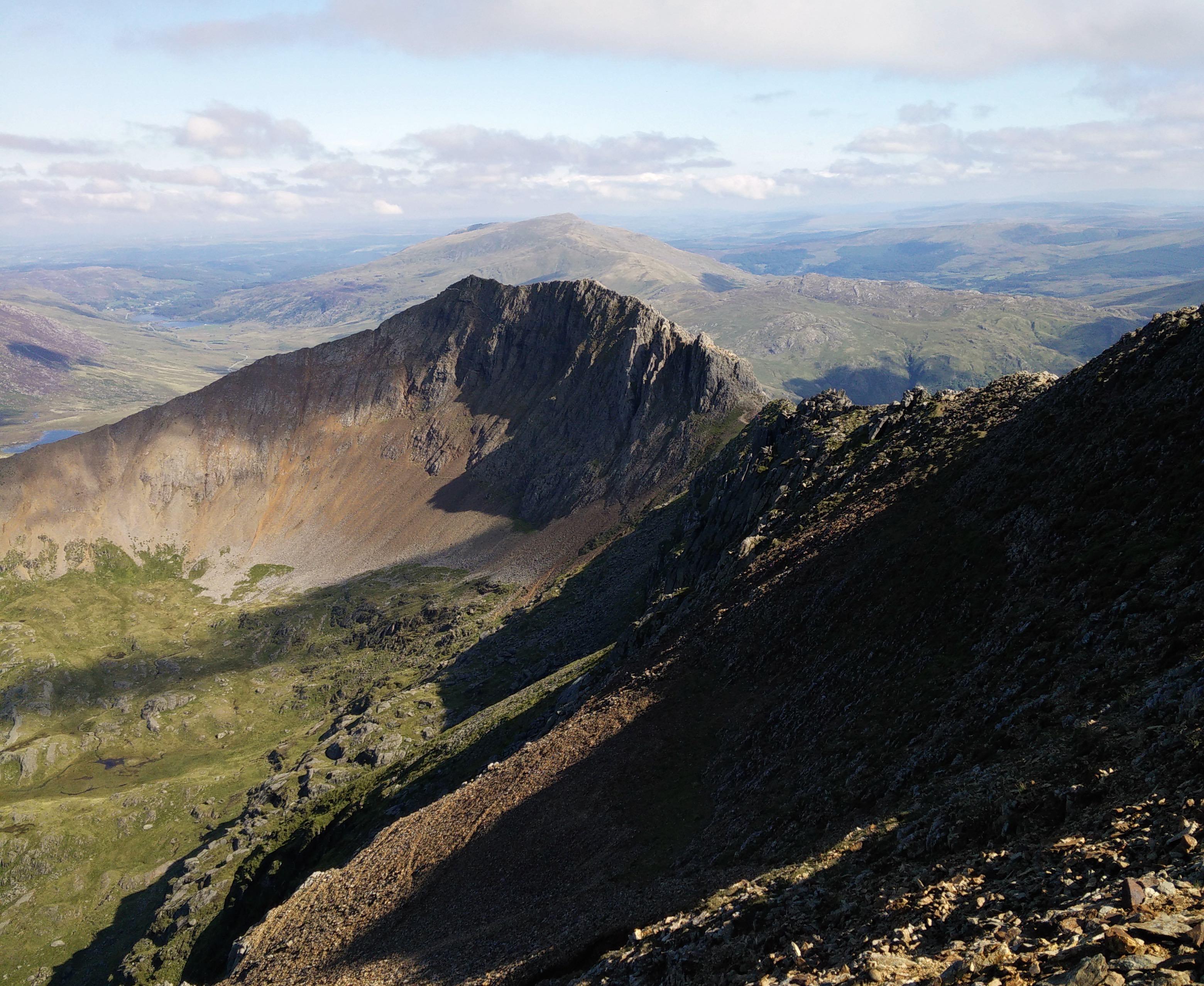

You might describe grade three scrambles such as this as the very essence of mountaineering. They are in no way contrived. They aim to climb mountains by aesthetically pleasing, natural lines. The feeling that they engender when you’re on them in fine conditions and feeling comfortable in your ability is consequently undiluted. And the most positive news of all? Our mountains swell with them. I’ve got the Dolmen Ridge and Cneifion Arête in mind for this spring (among others). Now if only Cicerone did a comprehensive guide book to all of them. Oh, wait…
Scrambles in Snowdonia
80 of the best routes - Snowdon, Glyders, Carneddau, Eifionydd and outlying areas
£16.95
Guidebook to 80 graded scrambles in Snowdonia, North Wales. The book is illustrated with photo topos and includes a range of routes, as well as all the classic routes including the Snowdon Horseshoe, North Ridge of Tryfan, Bristly Ridge and the Cneifion and Cyfrwy Aretes.
More information






